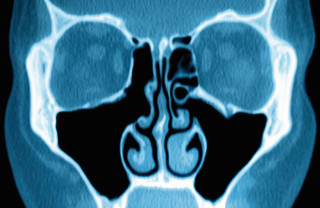
The term sinusitis simply means that the sinuses are inflamed, and this is usually caused by an infection or an allergy.
Normally, mucus drains through small channels into the nose. However, if these channels get blocked, the sinuses can become congested and inflamed.
Sinusitis is often acute (lasting two to three weeks). However, it can be chronic (lasting up to 12 weeks). Symptoms may include:
- Pain or tenderness in the forehead, cheeks or around the eyes, which is worse on stooping down
- Headache
- Fever
- A blocked or runny nose
- Cough
- Loss of smell or taste
- Bad breath.
In addition, nasal secretions may be thick and range in colour from white to yellow/green or even tinged with blood. This may indicate an infection, so refer these customers to the pharmacist.
Post-nasal drip
Normally, all mucus secretions from the nose drain to the back of the throat and are swallowed in a process we're not usually aware of. However, sometimes a person may feel as if mucus is accumulating at the back of their throat. This is termed 'post-nasal drip'. A person may describe this as a feeling of mucus dripping or trickling down the back of their throat, which may trigger coughing.
Post-nasal drip may occur when a person is suffering from a cold or an allergy.
